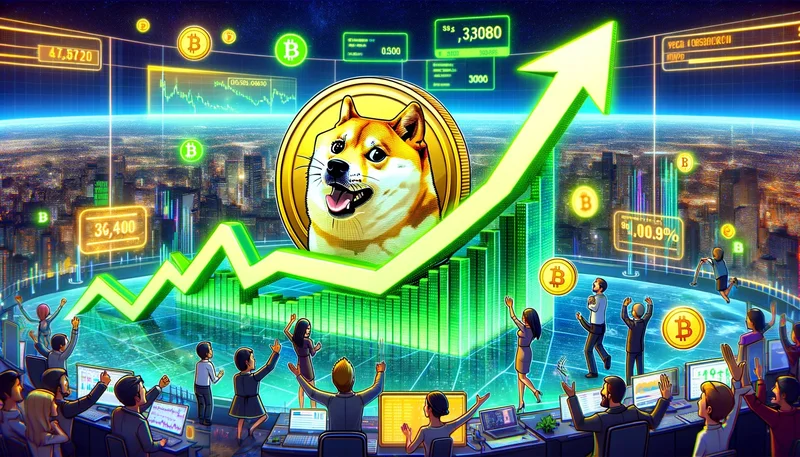The digital asset space often feels like a tale of two cities. In one, you have projects building what they hope will become the financial plumbing of tomorrow. In the other, you have cultural phenomena—assets whose value is tied not to cash flow or utility, but to the far more volatile metrics of attention and belief. Nowhere is this dichotomy clearer than in the perpetual debate between XRP and Dogecoin.
Looking at the two is less an exercise in comparing apples to apples and more like comparing a blueprint to a meme. One is a calculated, if highly speculative, bet on institutional adoption. The other is a bet on the enduring power of popular culture. The data tells us these are fundamentally different asset classes, even if they trade on the same exchanges. The real question isn't which one will "win," but rather, what kind of risk are you actually underwriting when you buy either?
Dogecoin’s price action is a fascinating case study in market psychology. On any given day, its movements are often attributed to broad macro trends, with market watchers asking Why Dogecoin Is Sinking Today and pointing to hawkish comments from the Federal Reserve or a strengthening U.S. dollar. This is standard for high-beta risk assets; when the cost of money goes up, speculative instruments are the first to get repriced. It behaves less like a currency and more like a leveraged play on market liquidity.
But the macro-correlation is where the traditional analysis ends. The core value proposition of Dogecoin, to the extent one exists, is its unparalleled mindshare. It’s the original meme coin, a cultural touchstone that can rally furiously when attention snowballs. The problem? "Mindshare" is not a balance sheet item. It’s a fickle, unquantifiable metric. How do you model it? Is it a function of social media mentions, search volume, or celebrity endorsements? This is my primary methodological critique of any long-term dogecoin price prediction: the underlying driver is sentiment, a variable that is notoriously difficult to forecast and can evaporate overnight.
Then there’s the structural issue of its tokenomics. A fixed 5 billion new DOGE are issued every single year, with no hard cap on the total supply. This is an explicit, programmed, and permanent inflationary pressure. Think of it as trying to fill a bucket that has a hole drilled in the bottom. To keep the water level from falling, you need a constant, powerful stream of new water—in this case, new money—just to offset the perpetual dilution.
I've looked at hundreds of asset models, from equities to commodities, and an uncapped, inflationary supply is a structural headwind that's almost impossible to justify for a long-term store of value. It demands that cultural relevance not only persists but grows indefinitely to absorb the new supply. That’s a tall order for any asset, let alone one born from an internet joke.

On the other side of the spectrum is XRP. If Dogecoin is pure chaos, XRP is a calculated attempt at order. Its issuer, Ripple, has a clear go-to-market strategy: become the preferred crypto-based plumbing for financial institutions. The entire thesis is built on utility—providing faster, cheaper cross-border payments and access to liquidity for settling trades.
The data points supporting this narrative are tangible. Ripple has been systematically pursuing regulatory licenses in major financial hubs (most recently securing key approval in Dubai), a necessary and grueling prerequisite for any serious institutional engagement. The platform, XRPL, is being built out to handle stablecoins and tokenized real-world assets like U.S. Treasuries. This is the language of enterprise software sales, not viral marketing.
Its tokenomics are also designed for a more predictable environment. The maximum supply of XRP is capped at 100 billion. While a significant portion is still held in escrow and released periodically, the finite nature of the asset provides a baseline of scarcity that Dogecoin fundamentally lacks. Investors can at least model the supply schedule without having to guess at the cultural zeitgeist a decade from now.
Of course, this doesn't make it a safe bet. The path to replacing or even augmenting legacy systems like SWIFT is fraught with immense competition and regulatory hurdles. And its valuation already reflects significant optimism. At the time of one recent report, its market capitalization was over $180 billion—to be more exact, $180.2 billion. This leads many to ask, Is XRP or Dogecoin More Likely to Be a Millionaire Maker? For XRP, becoming one from these levels would require it to capture a truly staggering portion of the global payments market. That’s possible, but it pushes the investment thesis firmly into the realm of high-risk venture capital.
Ultimately, the choice between these two assets boils down to what you believe drives value. Investing in Dogecoin is not a financial calculation; it's a sociological one. You are betting on the persistence of a meme, the whims of the crowd, and the hope that attention can be sustained indefinitely against a backdrop of constant supply dilution. It is almost pure market noise.
XRP, in contrast, is an attempt to create a signal. It's a venture-stage bet on a specific business plan: integrating blockchain technology into the existing financial framework. The thesis may prove to be wrong, adoption may falter, and the competition may win. But at least there is a thesis to analyze. One is a lottery ticket powered by cultural energy; the other is a high-risk tech investment disguised as a currency. The data suggests only one has a business plan, and for an analyst, that's the only place to start.